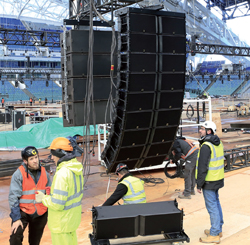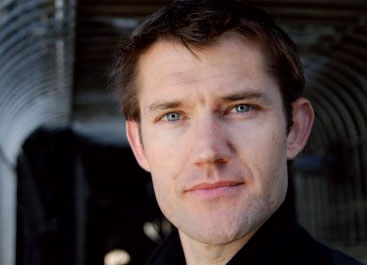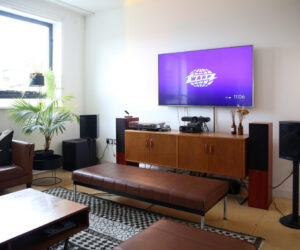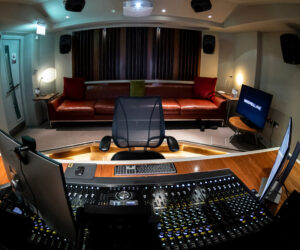In the 1990s, I spent every weekend doing sound at various football stadiums around Australia but unlike the audience, I had no interest at all in the game.
Early on I was more interested to know why all these people would leave their warm dry homes, travel to a stadium, sit in the rain (yes, it rains in Sydney!), wait in line for food and beer, wait in line to leave, wait in line to pay for parking, and drive back to their warm, dry homes.
Despite the rain, there is something magical about two tribes gathering to battle in a game of skill, with thousands watching and cheering. The sound systems of the day had limited capabilities, and as sport production became more demanding I felt that if I could improve the stadium sound performance, I could create a more engaging and dramatic atmosphere for every match.
My passion for stadium sound was turbocharged in 2000 when Sydney hosted the Summer Olympic Games, where I worked as a technician for a sound and communications contractor for the games. By early 2003, I was writing my thesis on the subjective experience of sound in a stadium environment for my Masters degree.
It is difficult to test a theory about stadium sound without access to a stadium and so I was thrilled to be engaged as the audio director for the Rugby World Cup Opening and Closing Ceremonies, staged at the Sydney Olympic Stadium. This provided the environment I needed to test a few theories and gain further valuable experience in stadium sound reinforcement.
Since then, with Auditoria, the company that I founded, I have been fortunate to be involved in ceremony audio as either the director or designer, or both at many major events, including Melbourne 2006 and Delhi 2010 Commonwealth Games, Doha 2006 Asian Games and Vancouver 2010, Singapore 2010 Youth Olympics, 2011 Rugby World Cup, Doha 2011 Arab Games, London Olympics 2012 and of course, the Sochi 2014 Winter Olympic and Paralympic Games Ceremonies.
Even though you can never fully predict their complex environments, the stadium has become a very comfortable environment for me.
Complex Geometry
During the London 2012 games, I met with senior members of the Sochi team over coffee. Fisht Stadium was little more than a hole in the ground and in 18 months would host the opening of the most expensive Olympic Games ever. Populous’ design for Fisht Stadium is unique. The roof shape is inspired by the snow-covered mountains and the internally lit roofing materials are inspired by the famous jewel-incrusted Faberge egg.
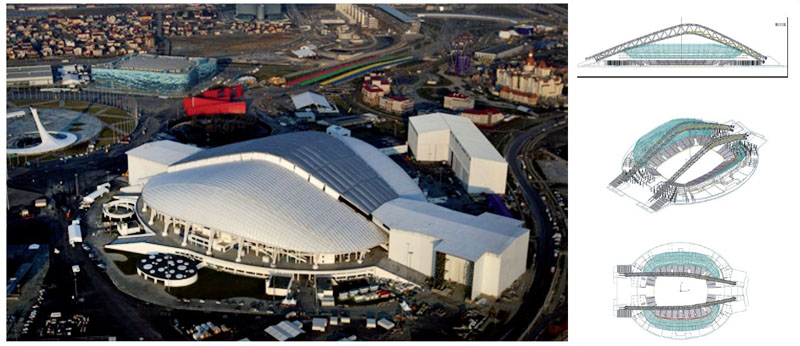
Exterior view of Fisht Stadium with temporary roof. Massive hangars with untreated composite sandwich panel walls were built at each end of the stadium as ceremony backstage areas where huge set pieces
were rigged and removed from the automation system.
The stadium bowl and roof structures are independently self-supporting. The east and west roofs provide weather protection to the majority of the seating and are mirror images of each another with a gap between to expose the field of play to the environment.
Each roof structure is supported by a massive North / South steel truss spanning the length of the building to support the on-field edge of the permanent roof as well as a temporary roof which filled the gap for security during the ceremonies. From an architectural point of view, Fisht Stadium is complex and beautiful. From an acoustical point of view, it is just complex.

And to make sound design even more difficult, the stadium was never really finished. Site visits during design development gave us very little to see other than the concrete bowl. Designing sound to architectural drawings is a familiar situation for auditoria. However the complex shape of the stadium and the acoustically significant north and south hangars, coupled with late finishing building construction required a slightly different approach.


